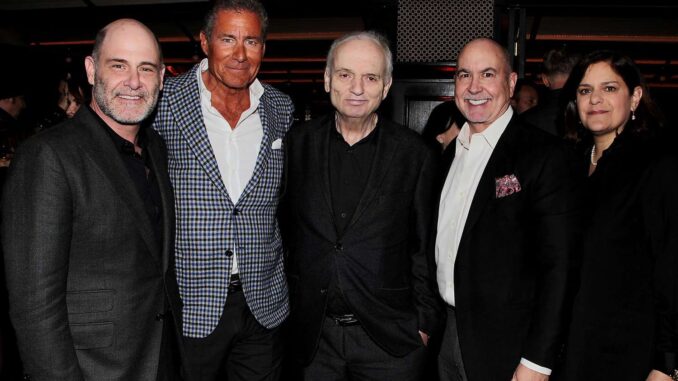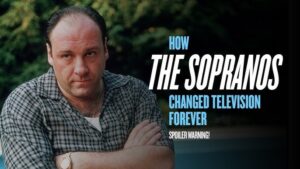
Tony Soprano: The first in a long line of ‘difficult men’
A wise guy walks into a psychiatrist’s office. He says: ‘Doctor, I don’t believe in any of this s***’.
He storms out. End of the joke. Nobody Laughs.
From the very first moment of the very first scene, The Sopranos set itself apart from old-school TV drama.
This wouldn’t be just another crime show. It would be genre, but not like The Godfather. It would be funny, but not like Analyze This.
The first episode opens with Tony. A family man, a “made guy”, sitting in a waiting room of a psychiatrist’s office, staring at a statue of a naked woman.
But there is something strange about Tony’s male gaze. It doesn’t show lust or yearning, but suspicion.
Curiously, throughout the episode, there is no explanation to Tony’s distrust of the statue. The strange gaze is never mentioned again.
This is the show’s way of telling us we will never fully understand his character.
Like his psychiatrist, we will spend 86 episodes trying to analyze Tony. For six seasons, we will be scared of him, feel attracted to him and, ultimately, be deceived by him.

Before its abrupt cut-to-black final scene in 2007, The Sopranos arrived at the surprising conclusion that therapy did not help Tony’s sociopathy, but rather validated it.
Like any good sociopath, Tony Soprano spends his days manipulating everyone around him, even fooling himself into believing he is a good guy.
This new way of approaching the male psyche in TV characters became known as “difficult men”.
From The Sopranos onward, we were introduced to a long line of “difficult men” – from Walter White to Don Draper – who were neither hero nor villain. Who we could neither love nor hate.
Golden Age television drama was born with The Sopranos and its reinvention of masculinity.
In 1997, when the pilot was first ordered television by HBO, male audiences used to escape from their boring lives, fantasizing about charming doctors and tough cops.
When Tony Soprano first came into the picture, we thought we were being given another chance at escapism.
Hits, whacks, dons, wiseguys and “this thing of ours”.
The Sopranos was being marketed as The Godfather for the modern man and, at first, it seemed like it could be.
Watching the first episodes, we were lost in the intricacies of the “garbage business”, with all its excessive violence and dubious code of conduct.
It was a show where “men were men” – good old fashioned earners who were in charge of the business and in charge of the house.
They cheated, gambled, drank and used violence to get what they wanted. They were the alpha males of the 1990s.
But underneath this cover of toxic masculinity, Tony Soprano was the sum of men’s biggest frailties. Fear, depression and weakness.
Throughout the show, Tony keeps referring to his family’s “weak gene” – reflection of his own insecurities.
The big, strong boss man who faints at dinner parties and spends hours sitting in a “shrink’s chair whining about his problems”.
His favorite line was: “Whatever happened to men like Gary Cooper? You know, the strong, silent type.”
The obvious irony, was how unlike Gary Cooper Tony actually was.
The reality, was that men like Gary Cooper were never real. They were invented by fiction and perpetuated by men who watched or read too much of it.
What The Sopranos did, was set men free. Presenting us with an alpha male suffering from panic attacks, whose strict education him taught to mask his feelings.
Suddenly, we didn’t have to choose between Clint Eastwood or Lee Van Cleef, between Superman or Lex Luthor. The world was no longer black and white, and men were allowed to be complicated.
Television has since evolved, become slicker, richer. Tony Soprano has since paved the way to dozens of difficult men.
But even with the (many) billions being poured into TV dramas, there is a general consensus that nothing ever even came close to The Sopranos.
For more than 20 years, no showrunner has managed to capture a moment in time like David Chase did with America in the 1990s.
The country has since evolved, for better and for worse. And so there is the rest of the world.
The age of toxic masculinity is now (gradually) a thing of the past. Family and gender dynamics are now a far cry from Tony and Carmela Soprano.
In the end, we saw The Sopranos for what it was. Not a show about mafia, but a show about family, fear and the dangers of toxic masculinity.
No matter how we chose to go from here, we must not forget that first moment when Tony looked suspiciously at the female statue before walking into a psychiatrist’s office.
